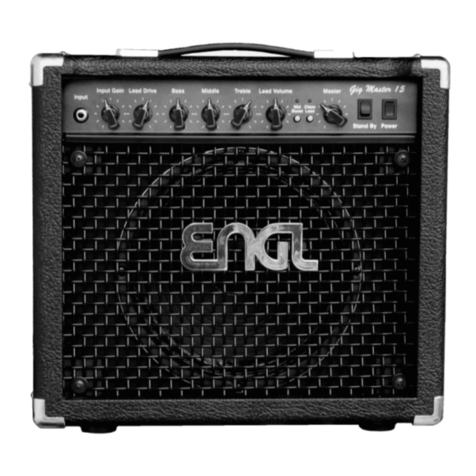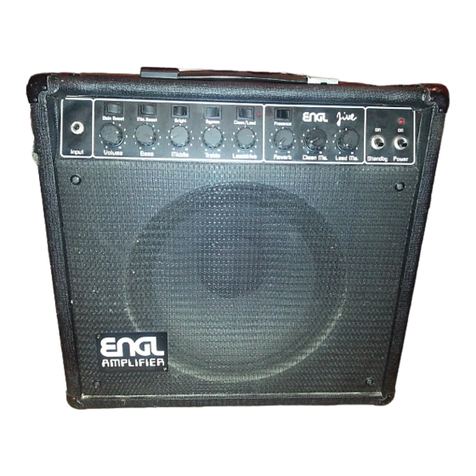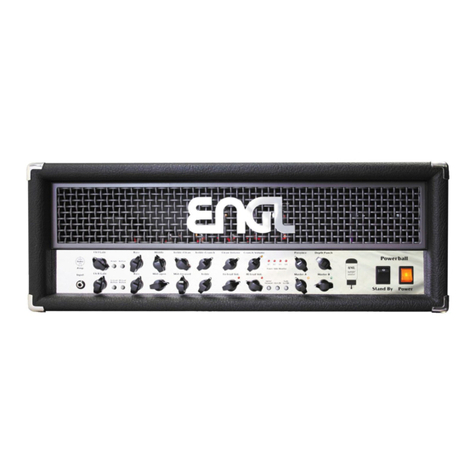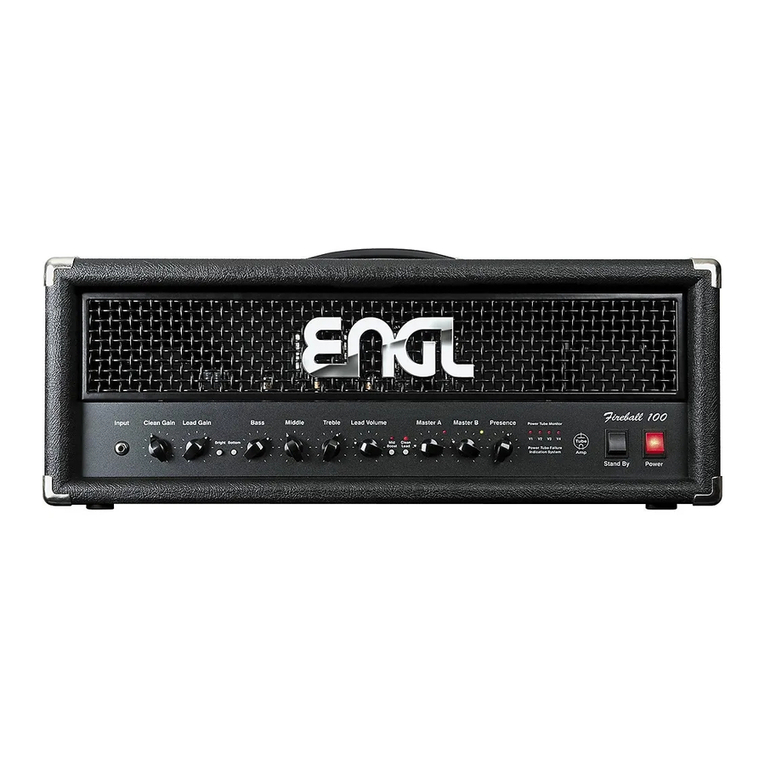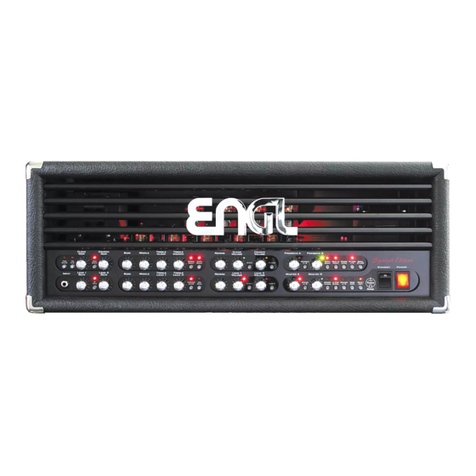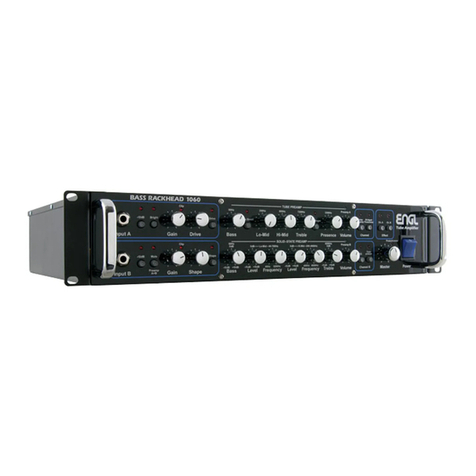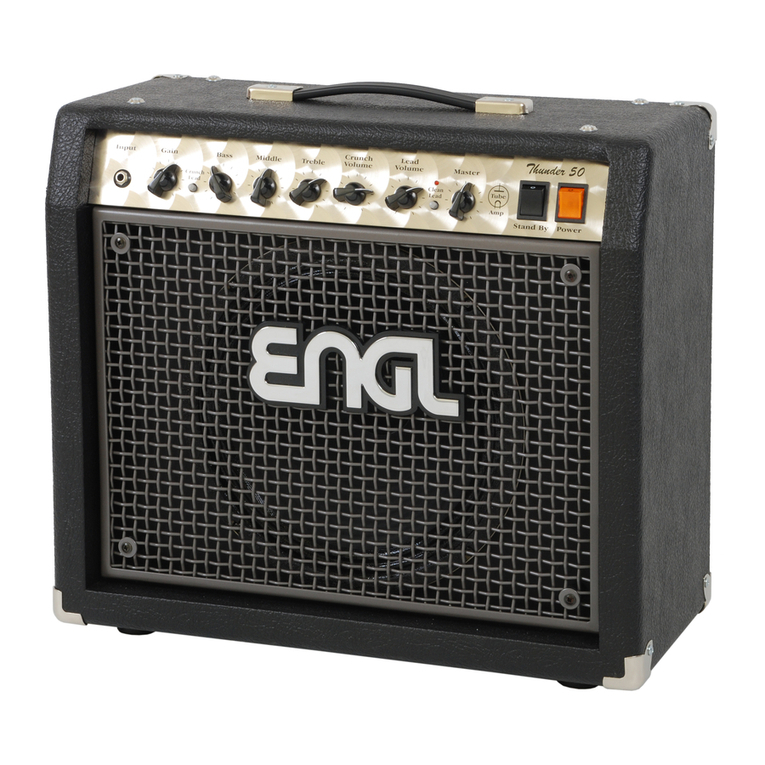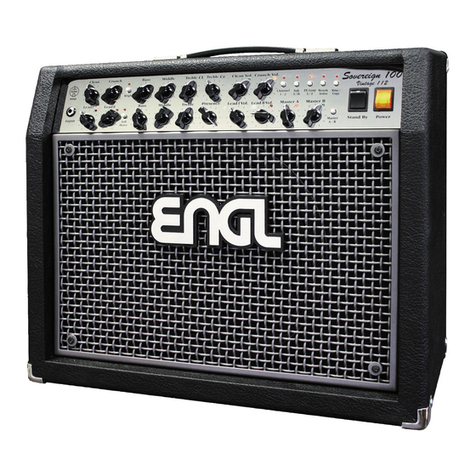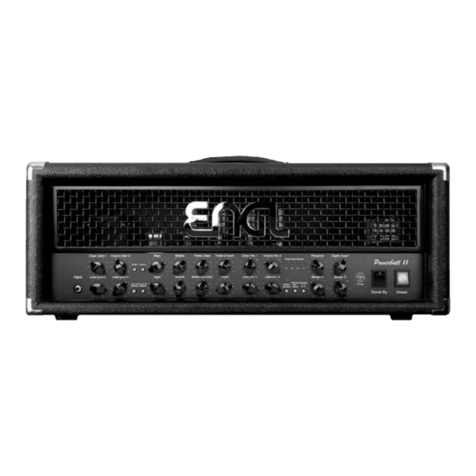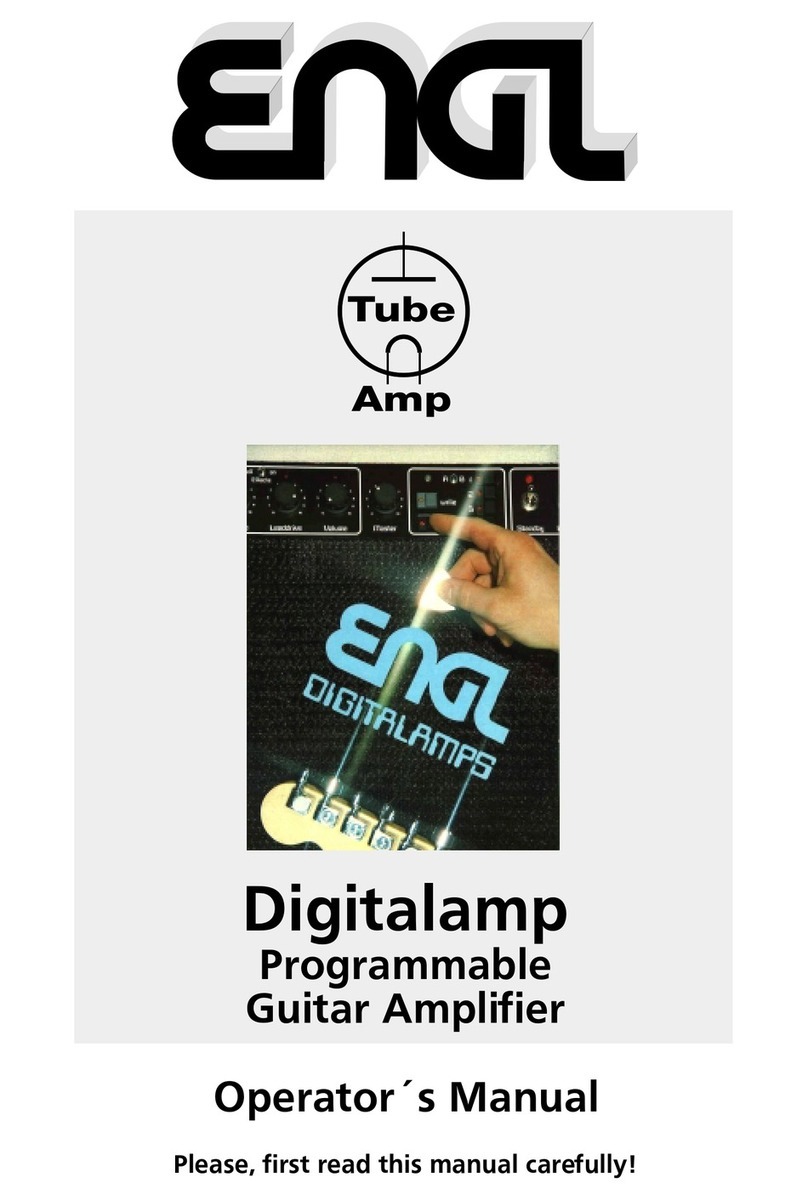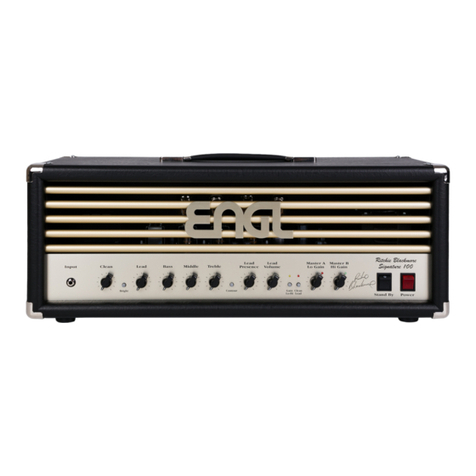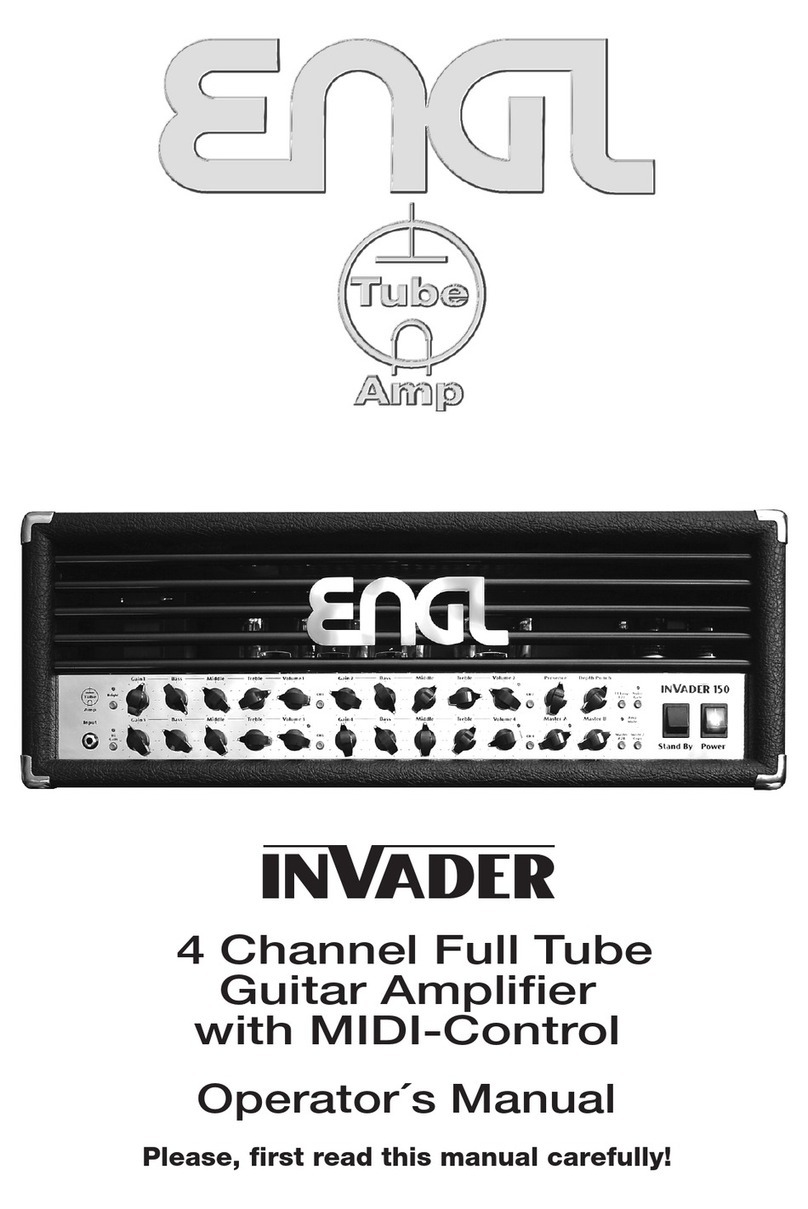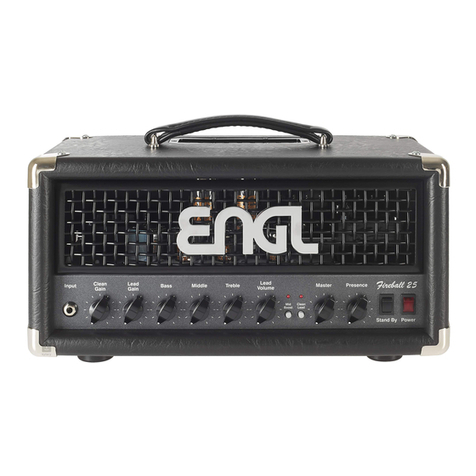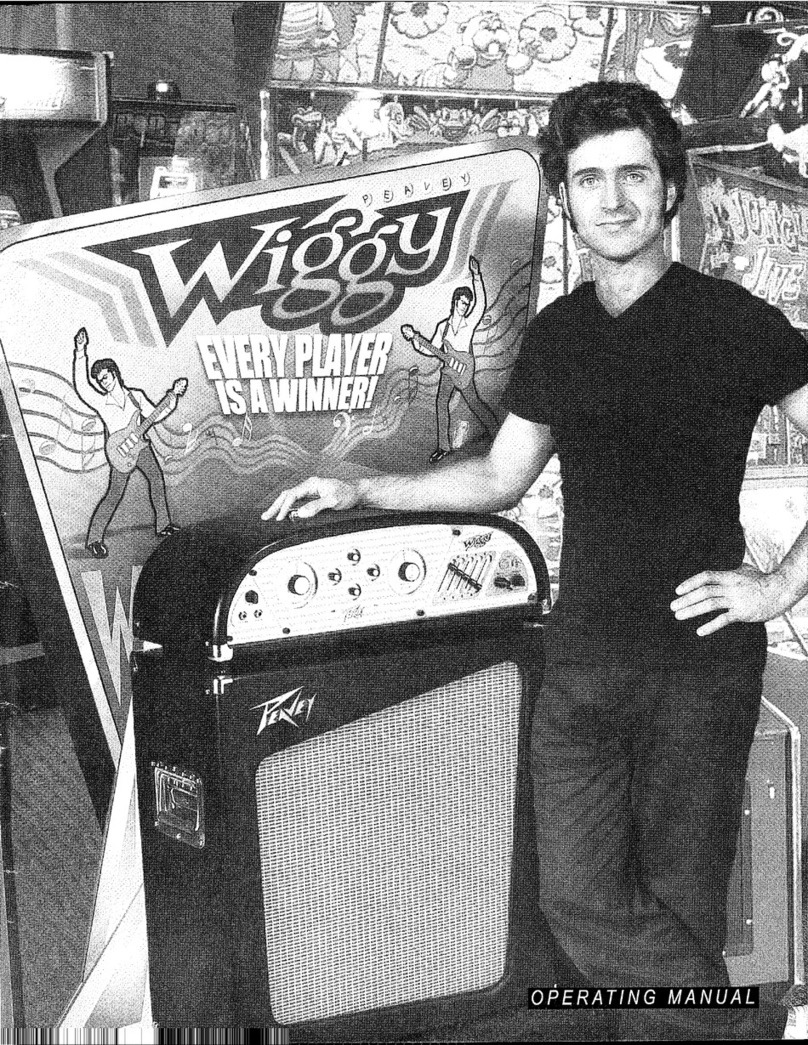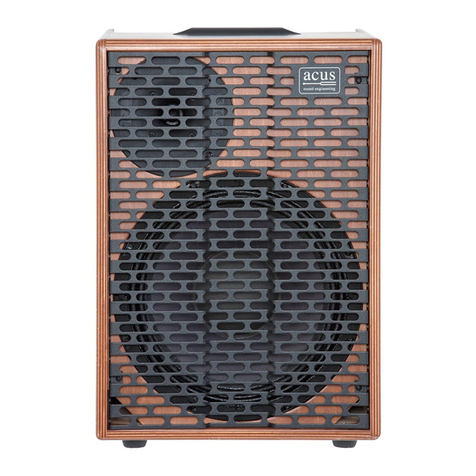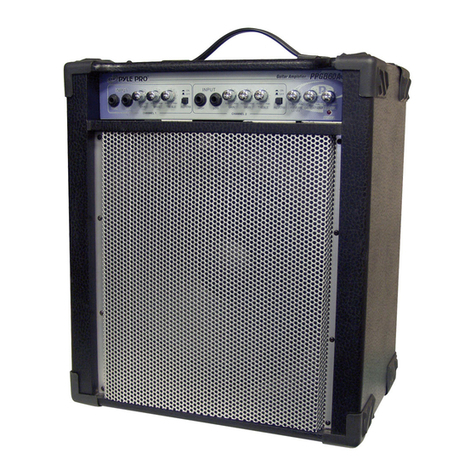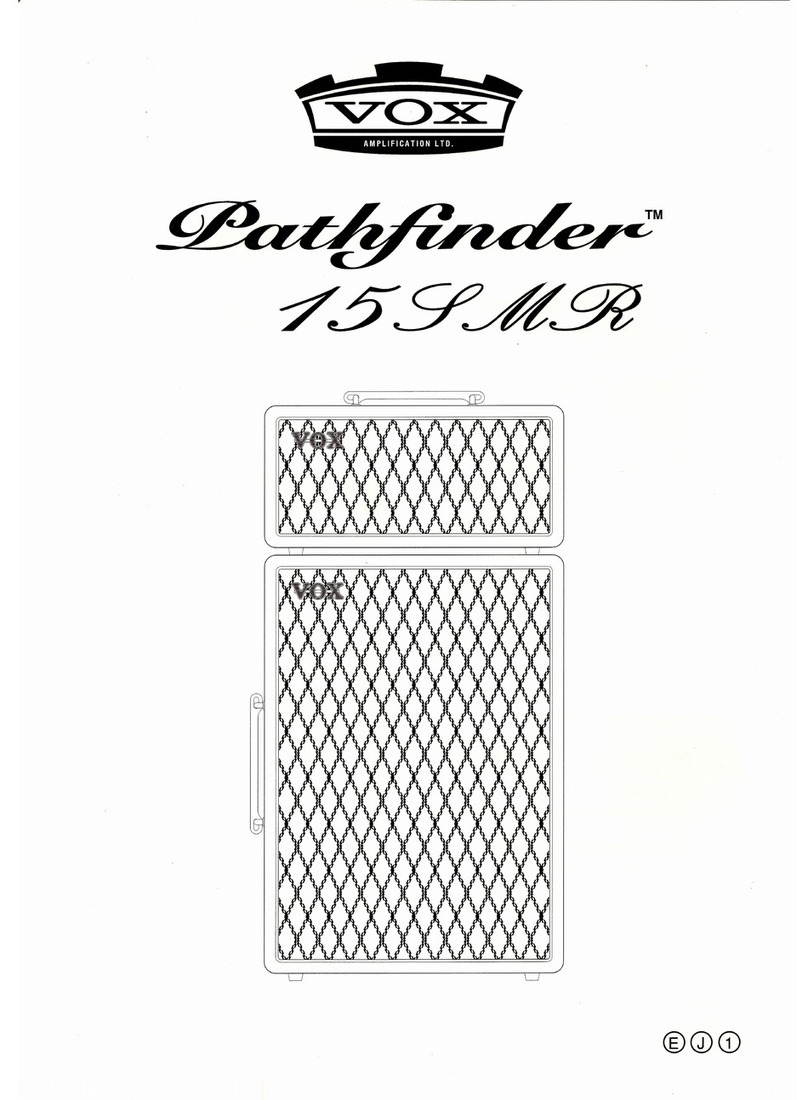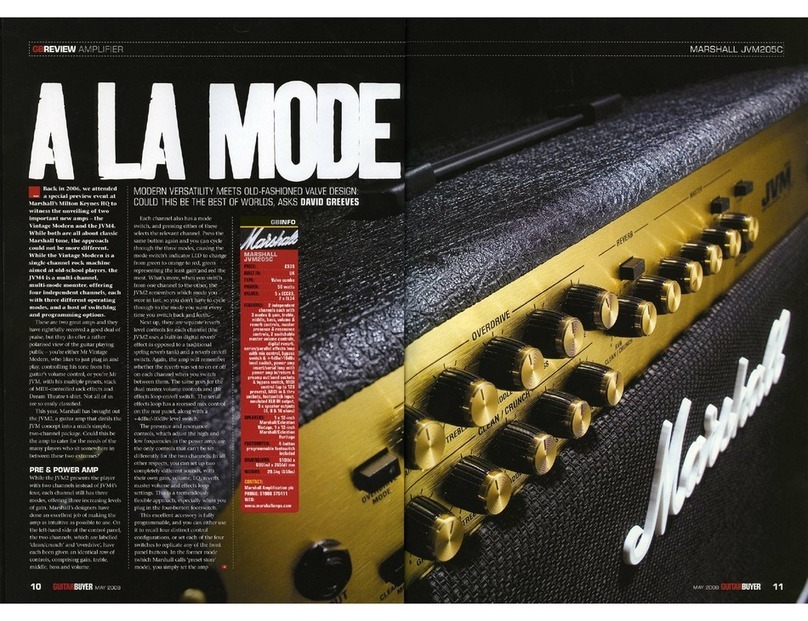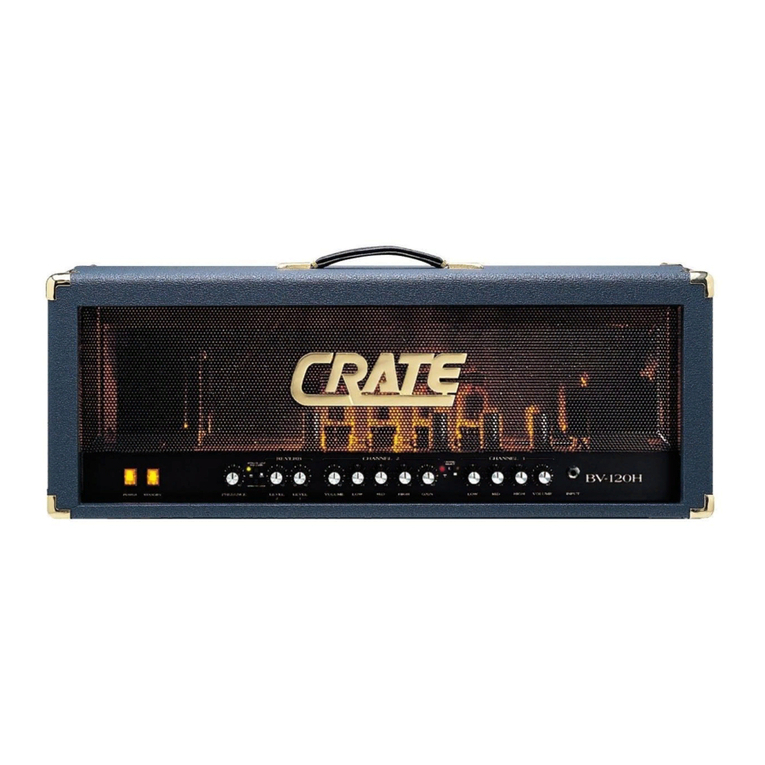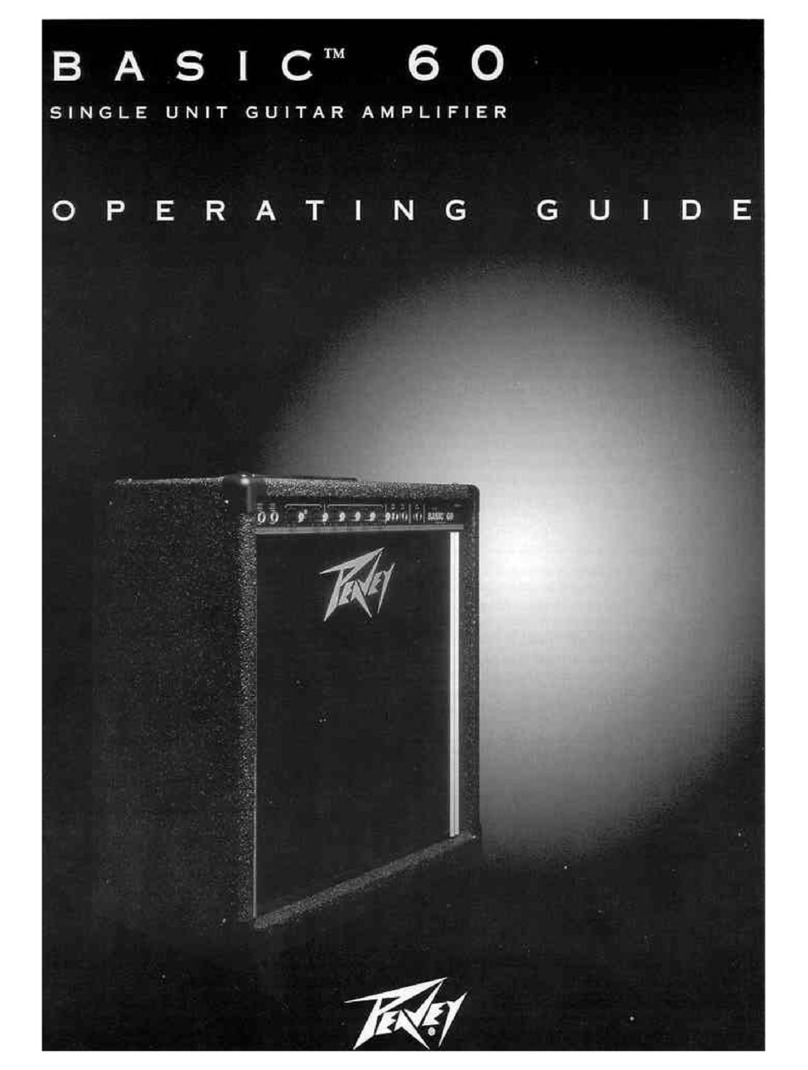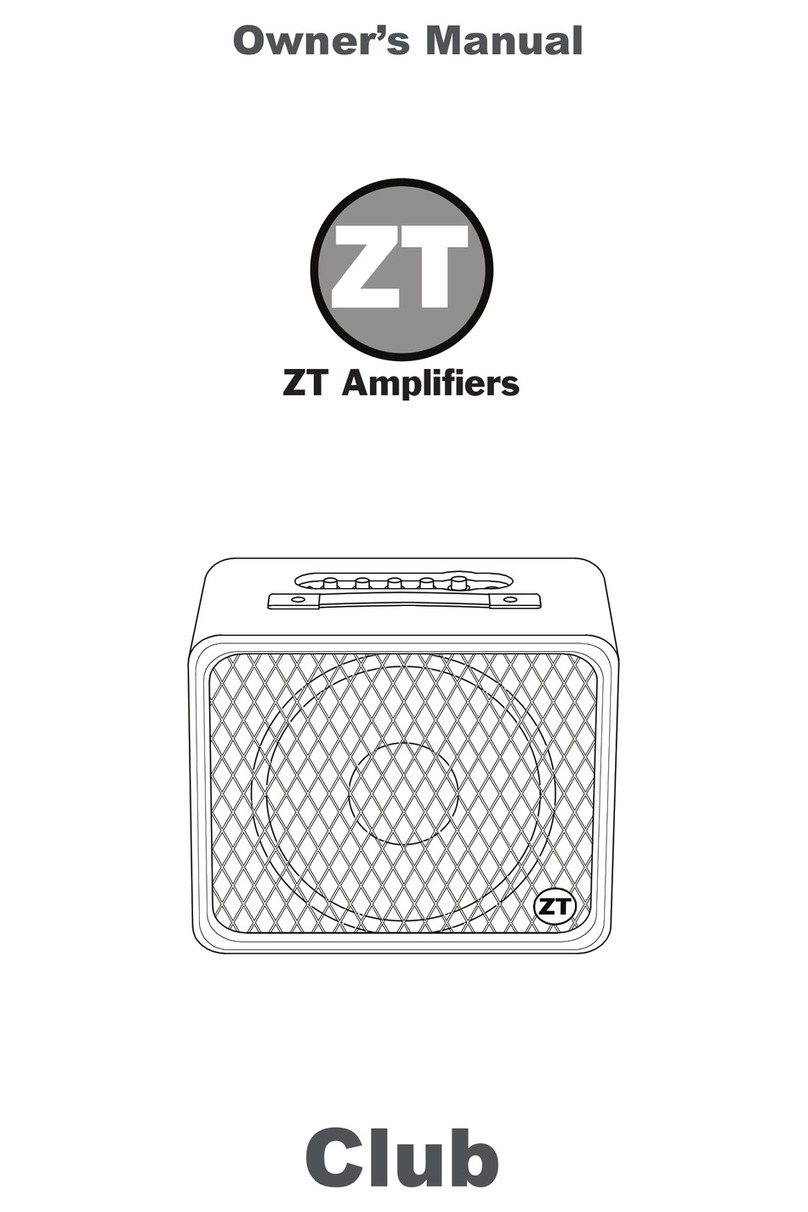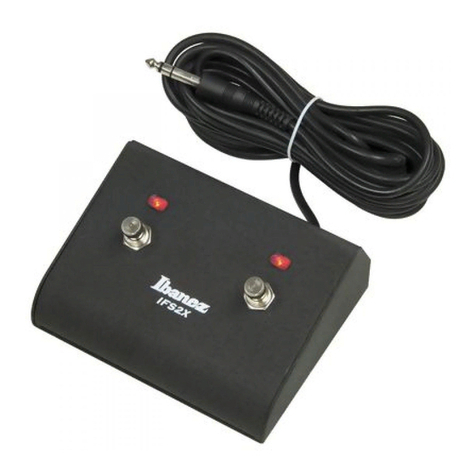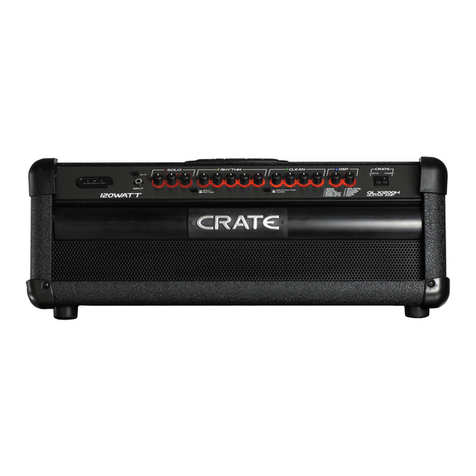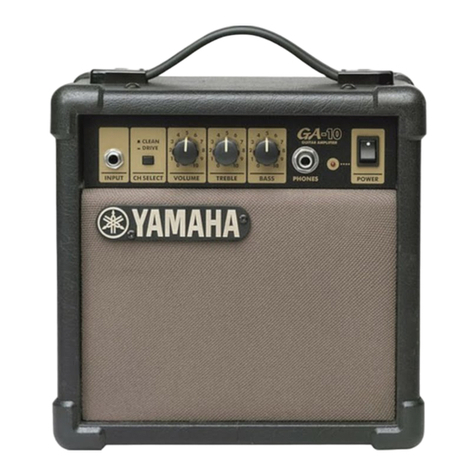Congratulations and thank you for choosing the ENGL Retro Tube amp!
It's all in the name: The Retro Tube line is a new generation of ENGL amps that dips into
a deep well of classic sounds. Plug in and you will be able to pull up the typical tones of
the iconic guitar heroes who wrote the book on rock. Offering four different gain
stages in two channels and brimming with trademark ENGL features, the Retro Tube
offers a vast range of spine-tingling tones. The amp's visuals are certainly striking and
stylish enough as it is, but the interchangeable front-panel frames add an entirely new
twist. The different colors let you tweak the Retro Tube amp's look to taste.
Painstakingly selected EL34 power tubes underscore the amp's retro flavors and
provide all the juice you need to dial up the sound pressure.
Preamp Channel 1 is tuned to deliver warm, organic clean sounds that break up
beautifully when you dial in higher gain levels. A twist of the wrist is all it takes to
conjure luscious harmonic overdrive .
This channel's Gain Boost option not only increases amplitude, it also adapts frequency
response to create a unique tonal structure perfect for sweet chord progressions and
sanctified rock riffs.
Channel 2 extends the amp's tonal spectrum with two far more aggressive gain
structures than Channel 1. It does everything you want it to do when it comes to
overdrive, saturation and all-out distortion: the Gain Boost option inserts an additional
triode tube into the signal path to create an extremely thick sound structure with days
of sustain and a rich overtone spectrum perfect for soaring leads.
The built-in Noise Gate helps stifle the annoying hiss often generated when Gain Boost
is engaged at very high gain levels. Channel 2's Tone button fattens up the sound in
both Gain stages. It enriches the midrange frequencies, effectively doubling the
number of basic sounds available to you in Channel 2.
Footswitches let you conveniently access the various setups so can mix it up for rhythm
and leads on the fly.
Other trademark ENGL features include a second master volume (Master A/B), a
power tube protection circuit with an LED display (P.T.F.), and an adjustable,
switchable FX loop (parallel/ serial).
There are few more handy features to rave about: The Retro Tube amp sports our
Serial Amp Control Port, or S.A.C. Port for short.
Plug an ENGL Z-9 Custom Foot Controller into to it and get hip to some very convenient
remote control options. This footboard lets you activate the two channels directly in
combination with Gain Boost and Master A/B switching simply by tapping its four
footswitches. And that affords you instant access to four sound variations at two
different volume levels each. Moreover you can access further prominent features like
and ; the build in Noise Gate is switchable via footswitch too.
In addition, the amp comes with three stereo jacks designed to accept dual
footswitches like the ENGL Z-4 or a MIDI switching system (e.g. ENGL Z-11) for
selecting the channels and other crucial Amp features.
Old world craftsmanship and highest quality components are part of what makes
ENGL amps so special, and the Retro Tube Amp is no exception. On that note, please
read and heed the guidelines on handling all-tube amps. The ENGL team is convinced
that this amp will delight and inspire you.
Tone FX Loop off/on
4
